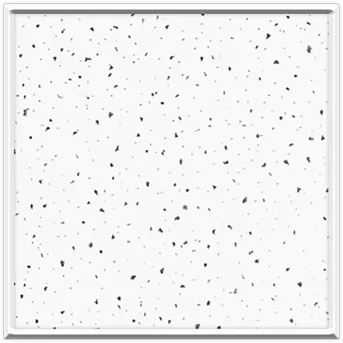- Afrikaans
- Albanian
- Amharic
- Arabic
- Armenian
- Azerbaijani
- Basque
- Belarusian
- Bengali
- Bosnian
- Bulgarian
- Catalan
- Cebuano
- Corsican
- Croatian
- Czech
- Danish
- Dutch
- English
- Esperanto
- Estonian
- French
- German
- Greek
- Hindi
- Indonesian
- irish
- Italian
- Japanese
- Korean
- Lao
- Malay
- Myanmar
- Norwegian
- Norwegian
- Polish
- Portuguese
- Romanian
- Russian
- Serbian
- Spanish
- Swedish
- Thai
- Turkish
- Ukrainian
- Uzbek
- Vietnamese
des . 21, 2024 01:34 Back to list
what is a grid ceiling
Understanding Grid Ceilings A Comprehensive Overview
When it comes to modern architectural and interior design trends, the term grid ceiling is increasingly prevalent. But what exactly is a grid ceiling, and why has it gained such popularity in both residential and commercial spaces? In this article, we will delve into the concept of grid ceilings, their design features, benefits, and applications, ensuring you have a well-rounded understanding of this intriguing architectural element.
Definition of Grid Ceiling
At its core, a grid ceiling refers to a ceiling design that utilizes a suspended grid framework to support ceiling tiles, panels, or other materials. This grid not only serves a functional purpose but also contributes to the overall aesthetic appeal of the space. The most common type of grid ceiling is the drop ceiling or ceiling tile system, where tiles are laid into a grid structure created from metal or other lightweight materials. This design allows for easy access to utilities located above the ceiling, such as ductwork, wiring, and plumbing.
Design Features
Grid ceilings are characterized by their modular, repetitive design, which creates a structured and uniform appearance. The grid itself can be made from various materials, including aluminum, steel, and vinyl, allowing for a range of finishes and colors. The tile or panel infill can also vary, including acoustical tiles, decorative panels, or even customized designs to match the overall theme of a space.
One notable feature of grid ceilings is their versatility in design. They can be utilized in various settings, from corporate offices and retail spaces to educational institutions and healthcare facilities. The grid can be installed at varying heights, allowing designers to create different atmospheres—high ceilings for a more spacious feel, or lower ceilings for intimacy and warmth.
Benefits of Grid Ceilings
1. Accessibility One of the primary advantages of grid ceilings is the easy access they provide to mechanical systems above. In environments where maintenance is often required, such as offices or schools, the ability to quickly remove tiles for repairs is invaluable.
2. Acoustics Many grid ceilings utilize acoustic tiles that help reduce sound transmission between spaces, making them particularly beneficial in public and communal areas where noise control is essential.
3. Aesthetic Flexibility Grid ceilings allow for a wide range of design options. Designers can mix and match different tile types, colors, and patterns to create unique visual effects that enhance the space's overall theme.
what is a grid ceiling

4. Concealment of Utilities Unsightly ductwork, wiring, and plumbing can be hidden from view with a grid ceiling, creating a cleaner and more polished look. This is especially important in commercial settings, where professional presentation matters.
5. Energy Efficiency Depending on the materials used and the installation design, grid ceilings can contribute to energy savings. Some ceiling tiles offer insulation properties, which can help maintain temperature and reduce heating and cooling costs.
Applications of Grid Ceilings
Grid ceilings are commonly found in various applications
- Commercial Buildings Offices, retail stores, and restaurants often employ grid ceilings to enhance acoustics, improve aesthetics, and provide easy access to maintenance systems.
- Educational Institutions In schools and universities, grid ceilings help reduce noise levels, offering a more conducive learning environment.
- Healthcare Facilities Hospitals and clinics benefit from grid ceilings as they can easily conceal medical equipment and provide essential acoustics for patient comfort.
- Residential Spaces Homeowners may choose grid ceilings in basements, kitchens, or living rooms to create a modern look while also allowing for efficient use of space.
Conclusion
In summary, a grid ceiling is more than just a practical solution for concealing utilities; it is a versatile design element that enhances the functionality and aesthetics of a space. With benefits that span easy maintenance, improved acoustics, and a plethora of design options, grid ceilings have found their place in a multitude of environments. Whether in an office, school, hospital, or home, they offer both style and substance, making them a popular choice among architects and designers alike. As you consider your next design project, keep the grid ceiling in mind—it may just be the architectural solution you’ve been looking for.
-
Transform Interiors with PVC Gypsum Ceiling: A Stylish, Durable, and Moisture-Resistant SolutionNewsMay.19,2025
-
The Smart Interior Upgrade: Discover the Durability and Versatility of Gypsum Ceiling Access Panel SolutionsNewsMay.19,2025
-
The Smart Choice for Interior Design: Discover the Value of PVC Gypsum Ceiling SolutionsNewsMay.19,2025
-
Mineral Fiber Ceiling Tiles: The Smart Blend of Performance and AestheticsNewsMay.19,2025
-
Mineral Fiber Ceiling Tiles: The Superior Choice Over Gypsum for Sound and Fire SafetyNewsMay.19,2025
-
Mineral Fiber Ceiling Tiles: Eco-Friendly Strength and Style for Every CeilingNewsMay.19,2025







